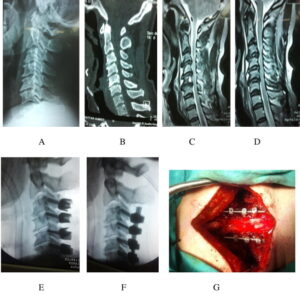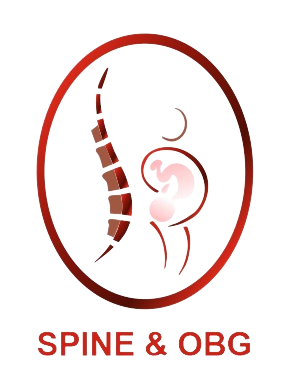
Cervical Laminectomy and
Lateral Mass Screws
Cervical Laminectomy and Lateral Mass Screws
Cervical laminectomy and lateral mass screws is a surgical procedure performed to decompress the spinal cord and nerves in the cervical spine (neck region) and stabilize the spine. During the procedure, a portion of the lamina is removed to relieve pressure on the spinal cord and nerves, a process known as laminectomy.
Lateral mass screws are then inserted into the lateral masses of adjacent vertebrae, and rods are connected to the screws to provide stability and support to the spine. This surgical technique is commonly used to treat conditions such as cervical spinal stenosis, where the spinal canal becomes narrowed, causing compression of the spinal cord and nerves.
Cervical laminectomy and lateral mass screws aim to alleviate symptoms, restore spinal stability, and prevent further neurological deficits.
Common reasons for undergoing cervical laminectomy and lateral mass screws include cervical spinal stenosis, where the spinal canal becomes narrowed, causing compression of the spinal cord and nerves. This procedure is indicated when conservative treatments fail to alleviate symptoms such as neck pain, arm pain, numbness, or weakness.
It aims to decompress the spinal cord and nerves, relieve symptoms, and stabilize the spine to prevent further neurological deficits. Additionally, it may be performed to address conditions like cervical disc herniation, spinal tumors, or trauma that result in spinal cord compression or instability.
Our Spine Surgeon Dr. Arjun R H H will assess your condition thoroughly before surgery to determine the most suitable course of action.
Minimally invasive spine surgery is typically performed using specialized instruments and techniques that allow the surgeon to access the spine through small incisions. These procedures often utilize fluoroscopy or other imaging techniques to guide the surgeon’s instruments to the precise location. By minimizing damage to surrounding tissues, muscles, and nerves, this approach aims to reduce pain, scarring, and recovery time for the patient.
Following cervical laminectomy and lateral mass screws surgery, the recovery period typically involves spending a few days in the hospital for monitoring and pain management.
Patients can expect to gradually resume light activities within a few weeks but should avoid heavy lifting or strenuous exercise during this time. Physical therapy/exercises often begins shortly after surgery to promote mobility, strengthen muscles, and aid in recovery, continuing for several weeks to months.
Complete recovery may take several months, during which patients gradually increase activity levels under the guidance of their surgeon. Regular follow-up appointments are important to monitor progress and ensure optimal healing. It’s crucial for patients to adhere to post-operative instructions to minimize complications and support a smooth recovery process.
The risks of cervical laminectomy and lateral mass screws surgery include infection, bleeding, and damage to nerves or spinal cord during the procedure. Hardware failure, such as screws or rods breaking or loosening, is also a potential risk.
Additionally, there is a risk of spinal instability or worsening of symptoms, as well as rare complications like blood clots or anesthesia-related issues.
It’s important to discuss these risks with our surgeon and carefully weigh the potential benefits against the risks before proceeding with surgery.
The benefits of cervical laminectomy and lateral mass screws surgery include decompression of the spinal cord and nerves, leading to relief from symptoms such as neck pain, arm pain, numbness, or weakness.
The procedure also provides spinal stability, preventing further shifting or movement of the vertebrae and reducing the risk of future complications.
Improved function, mobility, and strength are often observed post-surgery due to the alleviation of nerve compression and stabilization of the spine. Additionally, surgery can prevent further damage to the cervical spine and enhance overall quality of life.
Dr. Arjun R. H. H typically evaluates the necessity for cervical laminectomy and lateral mass screws using a combination of methods, including physical examination, imaging tests such as MRI, and a review of the patient’s medical history.
During the physical examination, Dr. Arjun R H H assesses strength, sensation, reflexes, and symptoms like pain and mobility limitations in the affected area.
Imaging tests, particularly MRI, help pinpoint the location and severity of spinal issues like disc degeneration or instability, and whether they are causing nerve compression. Based on these evaluations, Dr. Arjun H H determines if cervical laminectomy and lateral mass screws is the suitable treatment option for the patient’s condition.
The typical duration of a cervical laminectomy and lateral mass screws surgery ranges from 3 to 4 hours, although it can vary depending on factors such as the complexity of the herniation, the number of discs involved.
cervical laminectomy and lateral mass screws is known for its relatively short surgical time compared to traditional open spinal surgeries, due to its minimally invasive nature. However, the exact duration can be influenced by individual patient factors and any unforeseen complications that may arise during the procedure.
In many cases, patient may go home on the same day of the surgery, once they have recovered from the anesthesia and are considered stable by the medical team.
However, some patients may require an overnight stay for observation or if there are any concerns about their recovery. Overall, the duration of hospital stay following cervical laminectomy and lateral mass screws surgery depends on factors such as the patient’s overall health, the extent of the surgery, and the surgeon’s recommendations.
After cervical laminectomy and lateral mass screws surgery, maintaining a healthy spine involves a combination of medications, exercises, and lifestyle modifications.
For a safe and effective recovery, Dr Arjun R H H will prescribes medications to manage pain and inflammation during the recovery period.
Additionally, Doctor will recommend specific exercises to strengthen the muscles supporting the spine and improve flexibility. Depending on the patient’s overall condition and specific surgical outcome, the doctor may provide personalized recommendations . For more information and guidance, it’s advisable to consult Spine Surgeon Dr. Arjun R H H.
Views: 0
